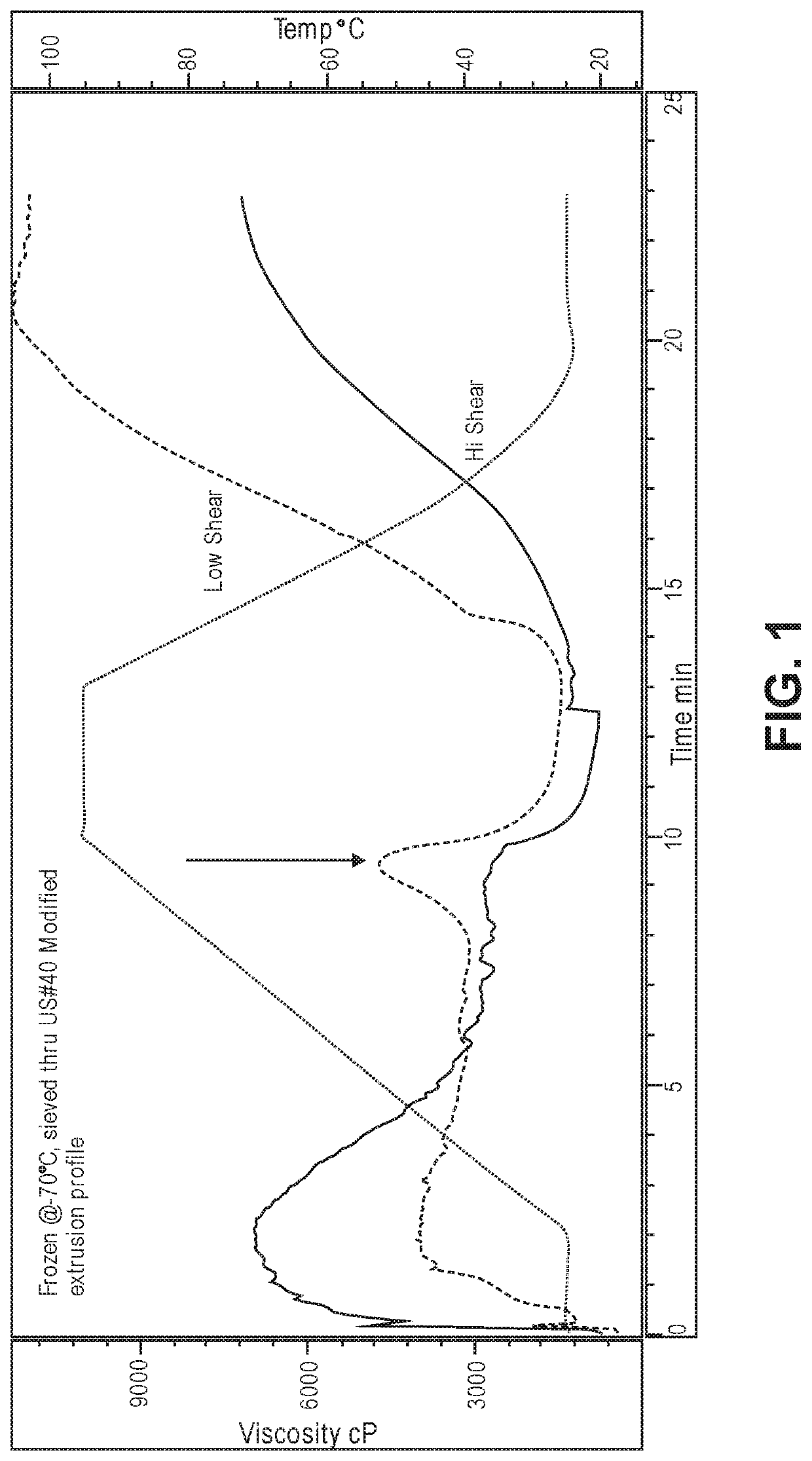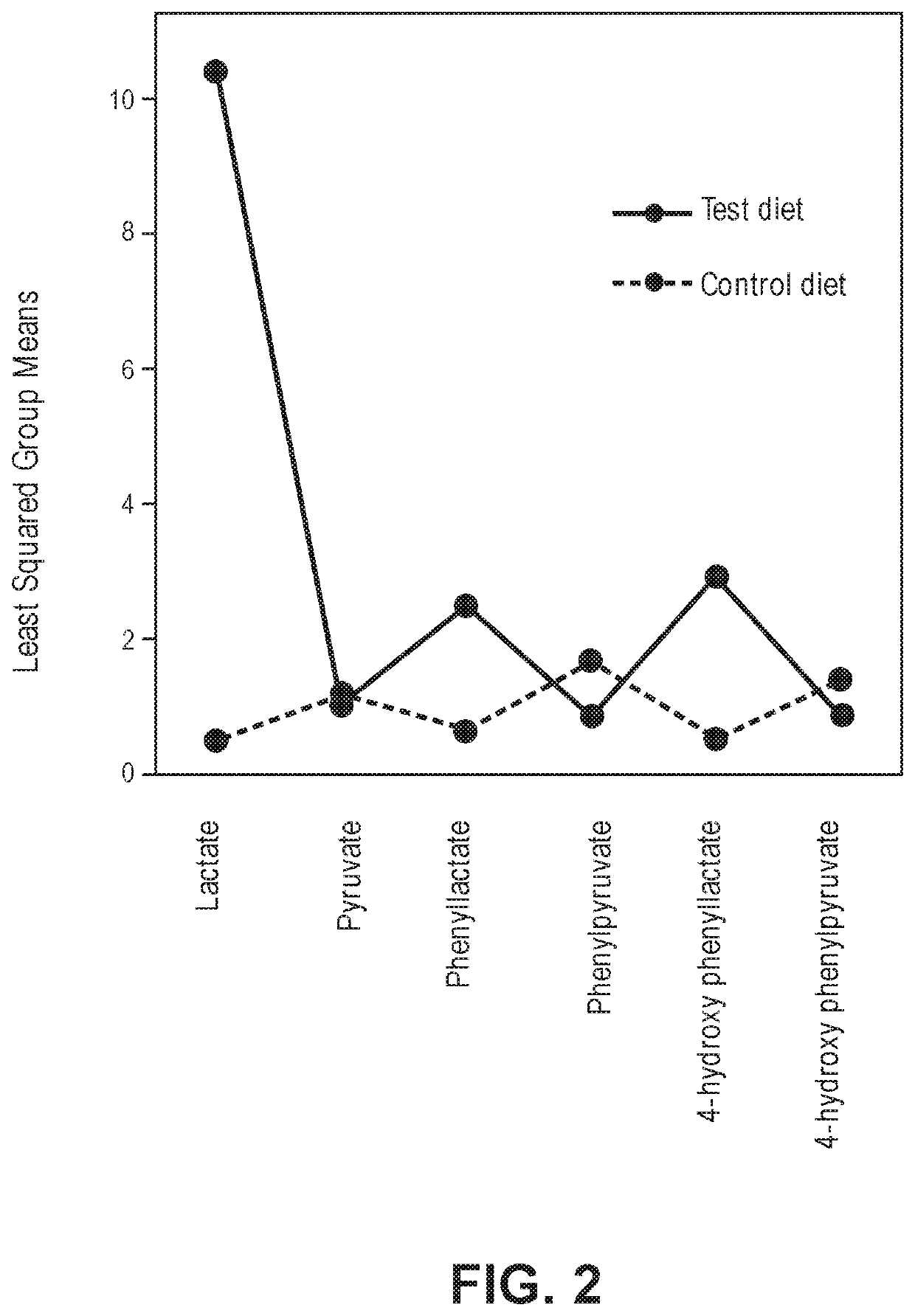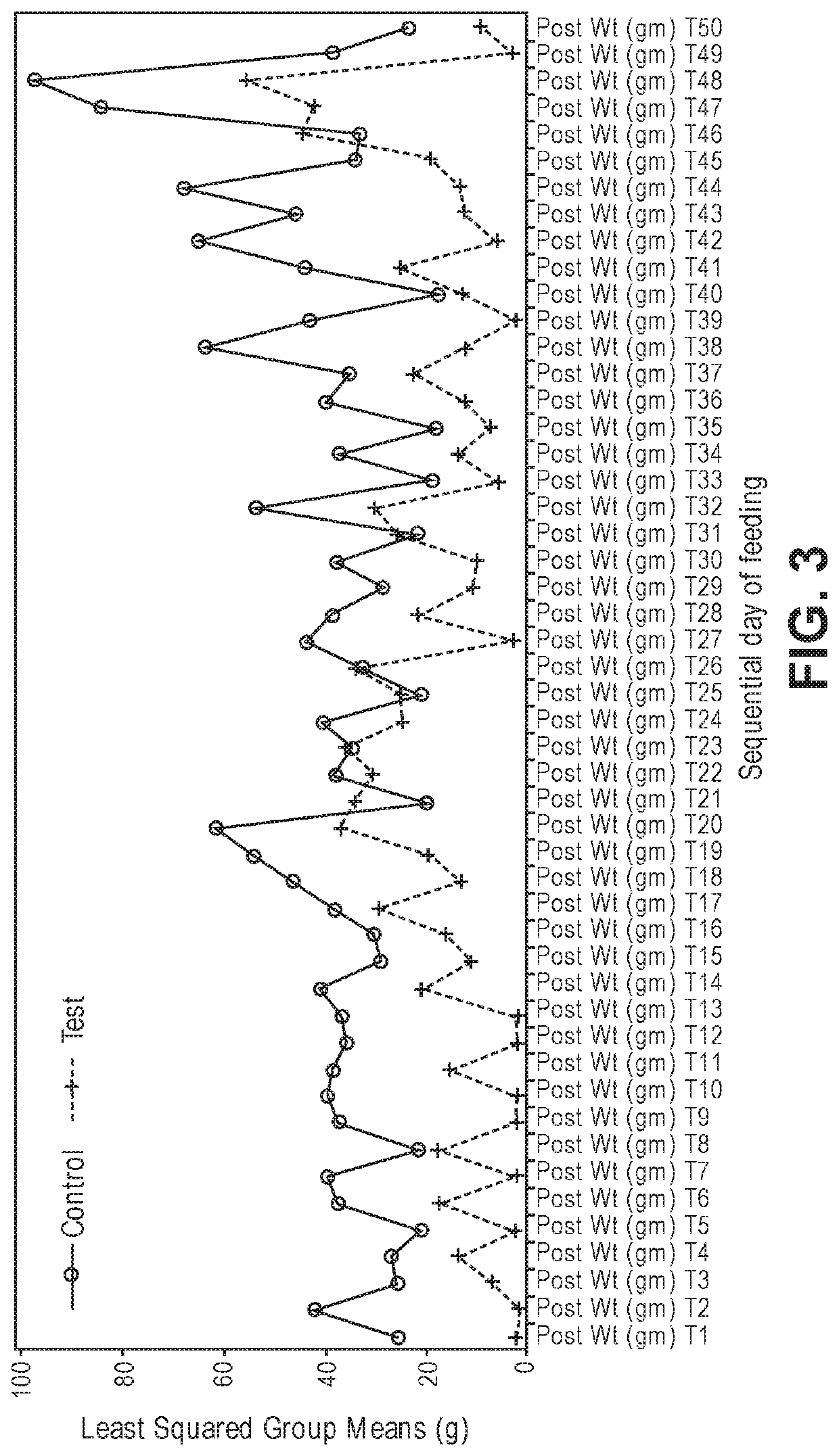Pet Food Composition and Method of Making Pet Food Composition Comprising Enhanced Levels of Resistant Starch
a technology of resistant starch and pet food, which is applied in the field of pet food composition and method of making pet food composition comprising enhanced levels of resistant starch, can solve the problems of reducing the proportion of beneficial increasing the accumulation of toxic microbial metabolites in the animal's body, and reducing the proportion of deleterious bacteria in the gastrointestinal tract, so as to achieve the effect of increasing the amount of carnosine, increasing the amount of dopamine s
- Summary
- Abstract
- Description
- Claims
- Application Information
AI Technical Summary
Benefits of technology
Problems solved by technology
Method used
Image
Examples
example 1
, Part B—Feeding of Control and Test Diets
[0069]Institutional Animal Care and Use Committee (IACUC)-approved Digestibility Assessment protocols were performed using healthy canines on existing panels. A digestibility panel, inclusive of stool assessment, was performed.
[0070]In addition to digestibility panels, an IACUC-approved clinical dietary intervention protocol was implemented which enrolled healthy canine subjects randomized to two groups based on age, weight, and gender. Canines were assessed by blood and fecal markers of biochemical and clinical health. The study was a caretaker-blinded, longitudinal design.
[0071]Stools were collected after six weeks of consuming the Control and Test Diets. Stools were assessed by Hill's Visual Stool Scale, which ranks the subjective desirability of stools from essentially liquid (Score 1) to exemplarily firm (Score 5). After scoring, within 30 minutes of defecation the stools were homogenized extensively and then portions were aliquoted int...
example 2
[0081]A study was completed using 36 senior dogs between the ages of 8 and 13 years. The Test Diet contained brewer's rice and corn as the sole sources of grain at a ratio of approximately 1:5. The Control Diet contained a variety of whole grains such as sorghum, wheat, barley, and oat, as well as 20% of the corn in the Test Food. The two diets had a similar nutrient profile except for the grains, as shown below in Table 9,
TABLE 9Comparison of the Test Diet and the Control DietNutrientTest DietControl DietMoisture7.6%8.91%Ash4.52%4.8%Crude fat12.67%12.98%Crude fiber1.5%1.9%Crude protein19.6%17.77%Carbohydrates54.11%53.64%*Carbohydrates (nitrogen-free extract) = 100% − (% protein + % fat + % fiber + % ash + % moisture)
[0082]All dogs were provided with the Test Diet for 30 days and were then divided into two groups. One of the two groups received the Control Diet for the next 30 days, while, during the same period, the other group was fed another food having a distinct formulation. At...
PUM
| Property | Measurement | Unit |
|---|---|---|
| barrel temperature | aaaaa | aaaaa |
| temperature | aaaaa | aaaaa |
| temperature | aaaaa | aaaaa |
Abstract
Description
Claims
Application Information
 Login to View More
Login to View More - R&D
- Intellectual Property
- Life Sciences
- Materials
- Tech Scout
- Unparalleled Data Quality
- Higher Quality Content
- 60% Fewer Hallucinations
Browse by: Latest US Patents, China's latest patents, Technical Efficacy Thesaurus, Application Domain, Technology Topic, Popular Technical Reports.
© 2025 PatSnap. All rights reserved.Legal|Privacy policy|Modern Slavery Act Transparency Statement|Sitemap|About US| Contact US: help@patsnap.com



